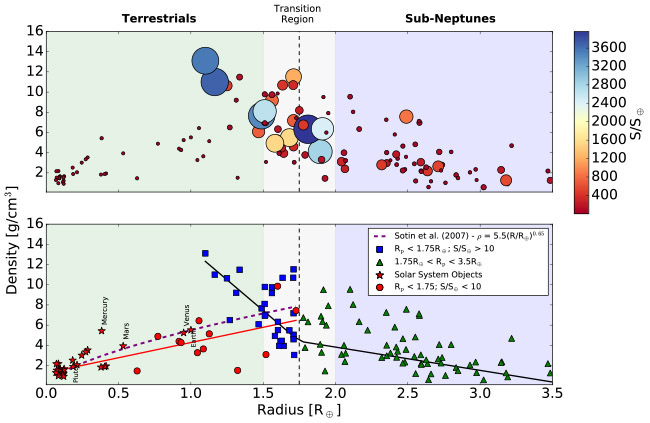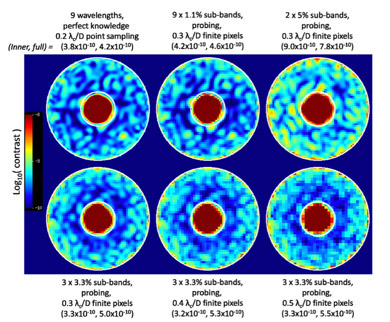
JPL researchers investigating exoplanets and their origins use space and ground-based telescopes, coupled with advanced modeling techniques, to characterize exoplanets and determine the physical and chemical properties of their atmospheres. Researchers also study the protostellar disks where planets are born. The work involves collaborations with many groups worldwide using related techniques.
Current Challenges
JPL researchers aim to answer numerous questions on the following topics: the kinds of exoplanets that exist, the factors that determine the properties of exoplanet atmospheres, and what the disks around young stars reveal about the formation of exoplanets. JPL researchers are using high contrast, high resolution, stellar coronagraphy (direct imaging of the exoplanets), transit spectroscopy, interferometry, theory, and development of new technology to advance this field of research.
To meet these challenges, researchers at JPL are involved in the following research tasks:
- Development of high contrast imaging technologies and future space telescope mission concepts aimed at directly imaging planets around other stars. In this area, laboratory coronagraphs have achieved contrasts exceeding billion-to-one in JPL space-simulation testbeds.
- Implementation of the CASE (Contribution to the ARIEL Spectroscopy of Exoplanets) Mission of Opportunity contribution to the ESA M4 ARIEL mission which will conduct a spectral survey of transiting exoplanets.
- High-contrast imaging experiments carried out at the Palomar and Keck observatories.
- Extreme-AO-fed Palomar Radial Velocity Instrument (PARVI), a first of its kind exoplanet Doppler spectrograph to detect planets in orbit around a star.
- Comparative exoplanetology through characterization of the composition and structure of exoplanet atmospheres using infrared spectroscopy of transiting exoplanets.
- Theoretical studies to understand chemical processes and dynamics of exoplanet atmospheres.
- Studies of planet formation in the circumstellar disks of young stars using ground and space observatories and computer modeling. Imaging with Hubble, in combination with Spitzer and Herschel measurements and detailed modeling, is leading to new insights into the disks' structure, composition and evolution.
- Numerical modeling to predict the planet formation signatures that will be detectable with present telescopes such as SOFIA and future telescopes such as JWST and WFIRST.

The Exoplanet Exploration Program
Exoplanet science is among the fastest evolving fields in astronomy today. Ground-based planet-hunting surveys alongside dedicated space missions (such as Kepler/K2 and CoRoT) are delivering an ever-increasing number of exoplanets. JPL researchers are involved in design and development of Hybrid Lyot coronagraphs (HLC) for the WFIRST coronagraph instrument.
The Exoplanet Exploration Program (ExEP) is responsible for implementing NASA’s plans for the discovery and understanding of planetary systems around nearby stars. ExEP plays an important function in exoplanet research, by laying out a long-term view of the entire field and charting out a strategic timeline of missions and instruments. The program includes the Kepler/K2 mission, the NN EXPLORE partnership between NASA and the NSF, the Large Binocular Telescope Interferometer, and the WFIRST's role in future exoplanet studies.